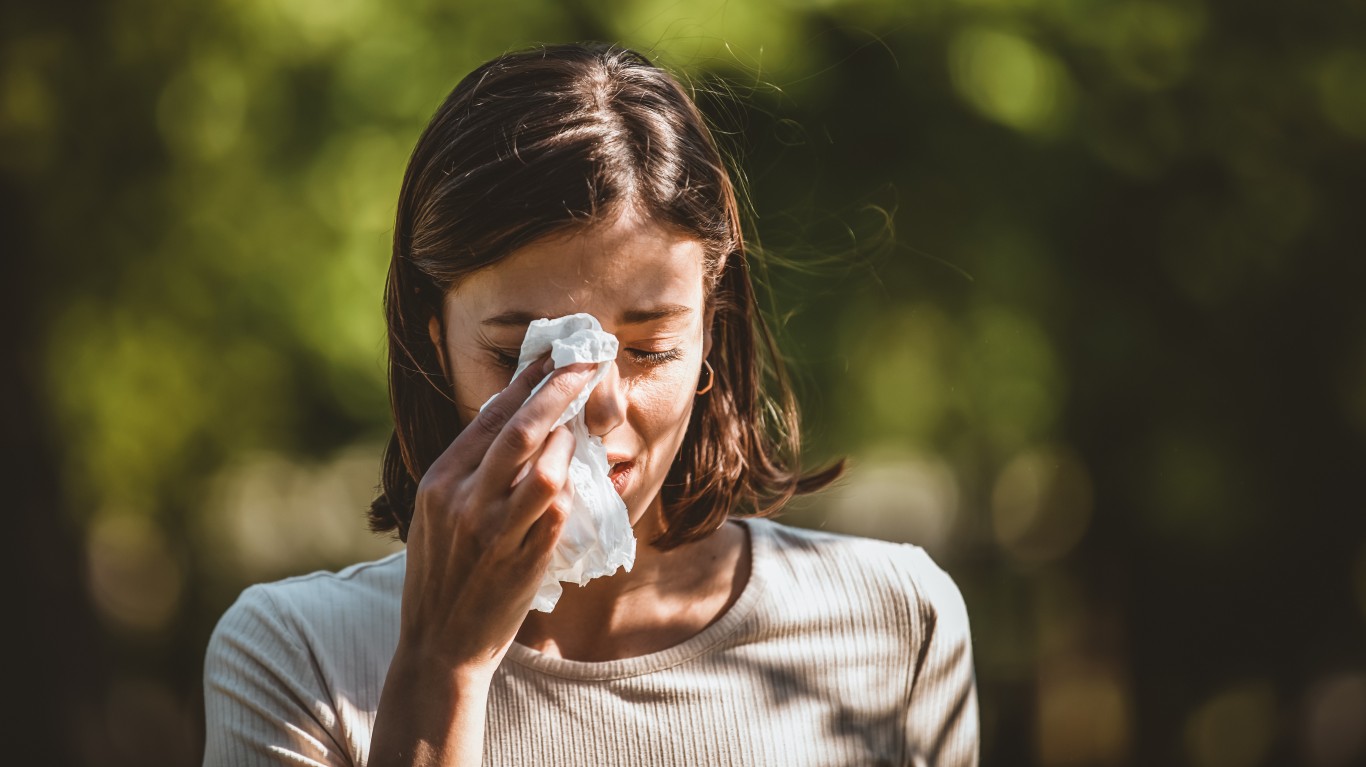
Allergies are a very common chronic condition among Americans. More than 7% of the adult population is diagnosed with hay fever every year, which is the common name for allergic rhinitis. In the spring, hay fever is often caused by various types of tree pollen, grass, and weeds.
An allergy is the immune system’s hypersensitivity reaction to usually harmless substances in the environment. If the body is allergic to food, most symptoms occur around the mouth, throat, or stomach. If the allergen is something a person breathes in, the symptoms are then likely to affect the eyes, nose, and lungs.
24/7 Tempo reviewed information by the American Academy of Allergy, Asthma and Immunology and other health-focused sites to compile a list of both common and lesser-known symptoms of spring allergies.
The duration of the allergy season in the spring varies depending on geographic location. Cities in warmer climates tend to have longer pollen seasons, sometimes starting as early as January, while areas in colder climates tend to have shorter pollen seasons — these are the 25 worst cities for people with spring allergies.
Click here for 16 symptoms you may not know are caused by spring allergies.

Earache
Earaches are most commonly caused by ear infections, but seasonal allergies may also be the underlying cause. When the body reacts to pollen or other allergens as if they were a harmful substance, the immune system releases histamines, which may cause the mucous membranes in the nasal cavities and ears to become inflamed. The inflammation may prevent fluid or mucus from draining away, and that congestion may cause the earache.
[in-text-ad]

Asthma attacks
The same allergens that cause watery eyes in some people may cause an asthma attack in others. The body identifies what is actually a harmless substance like tree pollen or grass as harmful bacteria. To protect itself, the immune system releases histamines, which leads to allergy symptoms. In some people, however, the histamine also affects the lungs and airways, leading to asthma symptoms.

Frequent infections
Infections are not a common sign of allergies, but they are possible, especially in people already with immune deficiencies. Allergies can lead to congestion, which in turn can lead to fluid buildup in the sinuses, increasing the risk of infection in the ears and sinuses.

Dark circles under the eyes
Dark circles under the eyes are usually caused by extreme fatigue or chronic sleep deprivation. They may be a symptom of allergies as well. The condition is called allergic shiners. Allergens cause inflammation that expands the tiny blood vessels under the eyes. The congestion of small blood vessels beneath the thin skin of the eyes causes a dark color to appear.
[in-text-ad-2]

Loss of sense of smell
Allergens that irritate the nose’s lining may lead to temporary anosmia — the complete loss of sense of smell. This is not a very common symptom of hay fever, unless the allergies are severe. What also may cause anosmia is a cold, sinus infections, or poor air quality.
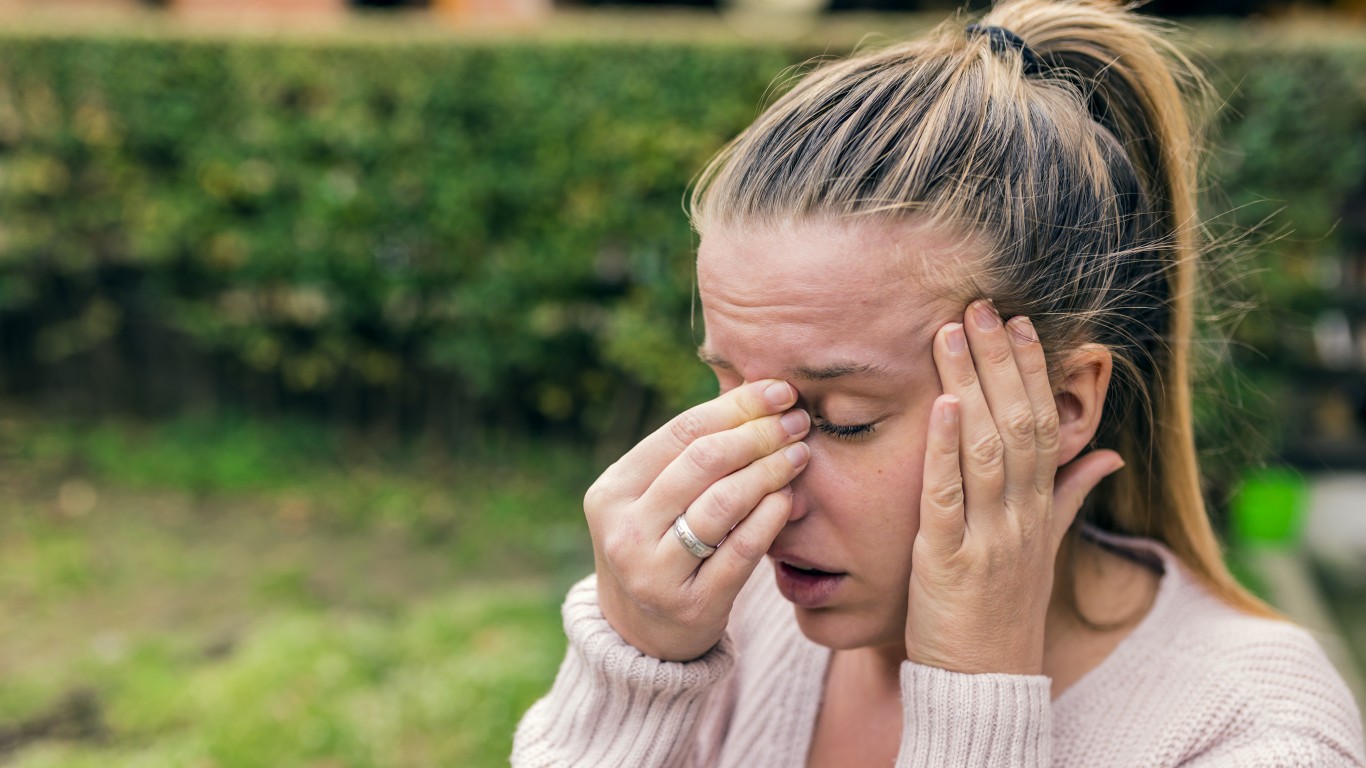
Sinus pain
When you inhale pollen, dust, or other particles you are allergic to, the sinuses swell because they are trying to remove the allergens. The sinuses get inflamed when you have allergies, and the sinus cavities may become blocked.
[in-text-ad]

Sniffles
One of the most common symptoms of allergies is rhinitis, an inflammation of the moist tissue lining the nasal cavity that causes swelling and congestion inside your nose. Swollen mucous membranes reacting to allergens like pollen are often the reason behind a serious case of the sniffles.
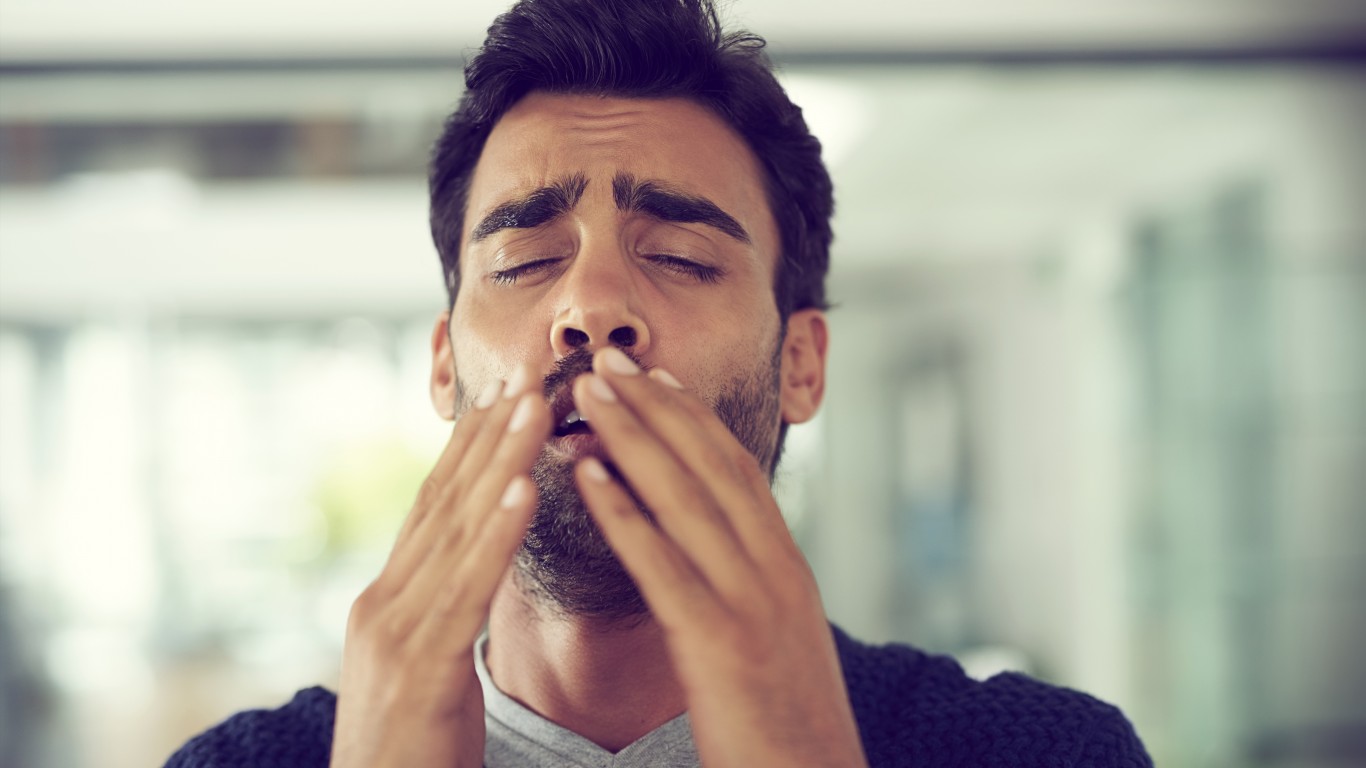
Sneeze
The nose is like a filter for the body, and sneezing is a reflex the body uses to remove tiny bits of blockages in the nostrils. When any small particles like pollen, dust, or anything you are allergic to irritate the nasal lining in the nose, they cause an unpleasant tickling sensation — and you sneeze.
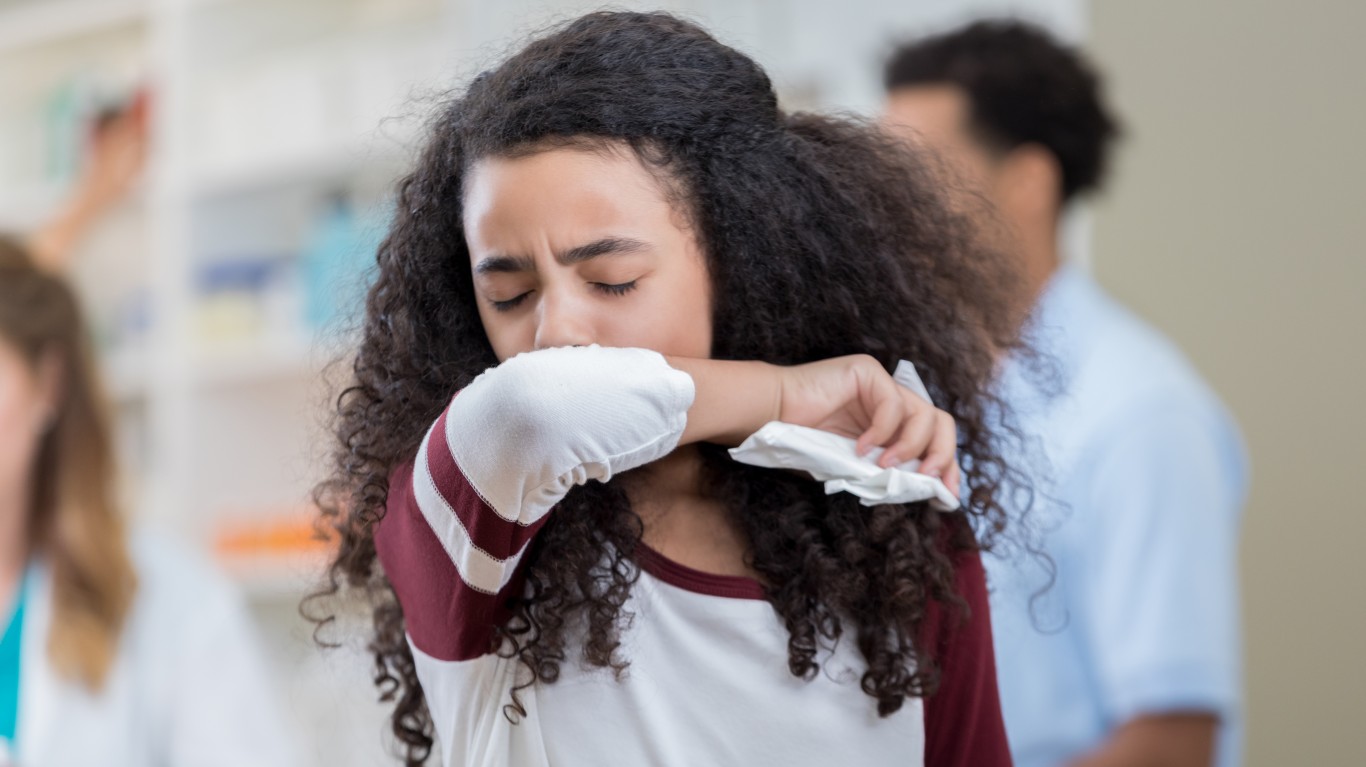
Cough
Coughing is another way for the body to get rid of foreign particles, irritants, and allergens from the throat and lungs. Coughing, by forcing air out of the lungs under high pressure, removes substances that don’t belong in the lungs. Inhaling pollen or anything you’re allergic to causes the lungs to overreact and cough to remove them.
[in-text-ad-2]
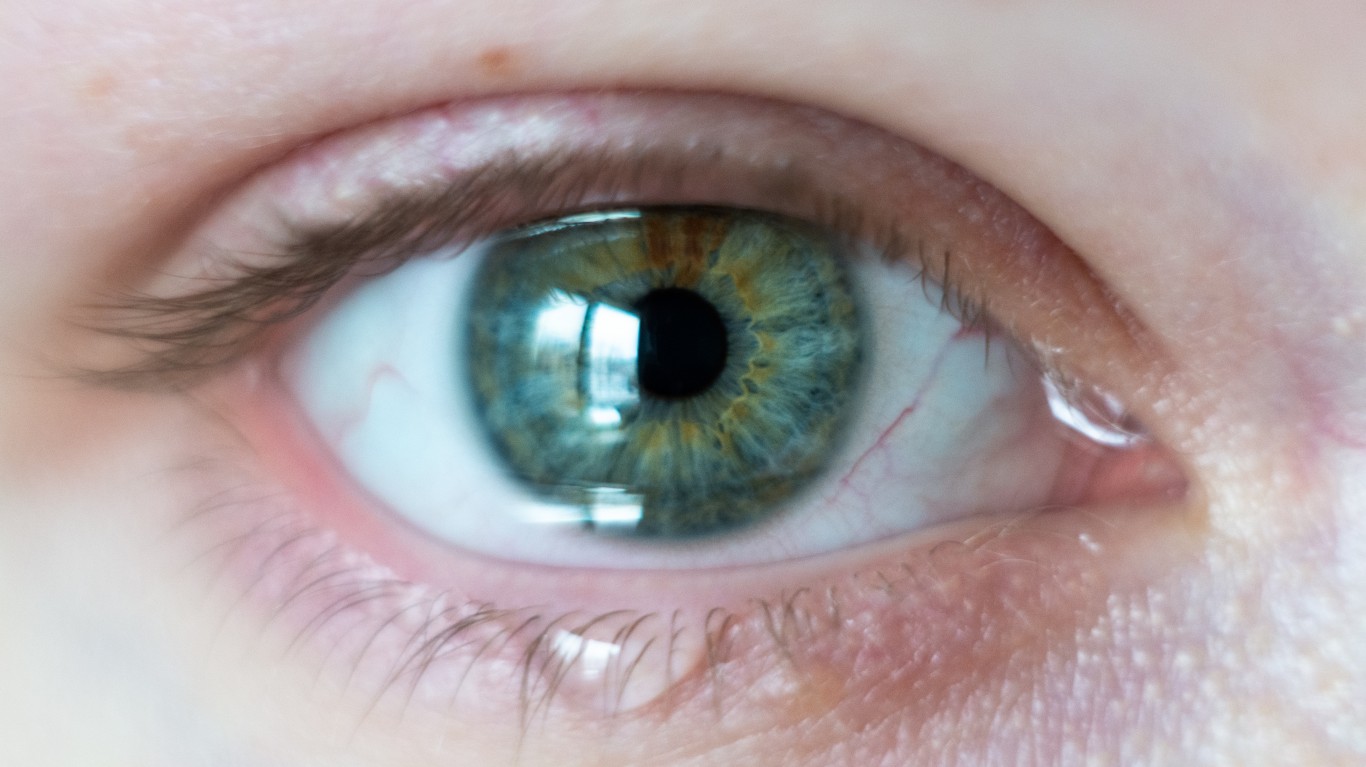
Watery eyes
The body produces tears to keep the eyes lubricated, as well as to help remove any foreign particles. Sometimes, however, the body produces too many tears, resulting in watery eyes, also called epiphora. Tear over-secretion may be caused by irritation or inflammation of the surface of the eye, which may be caused by allergies.
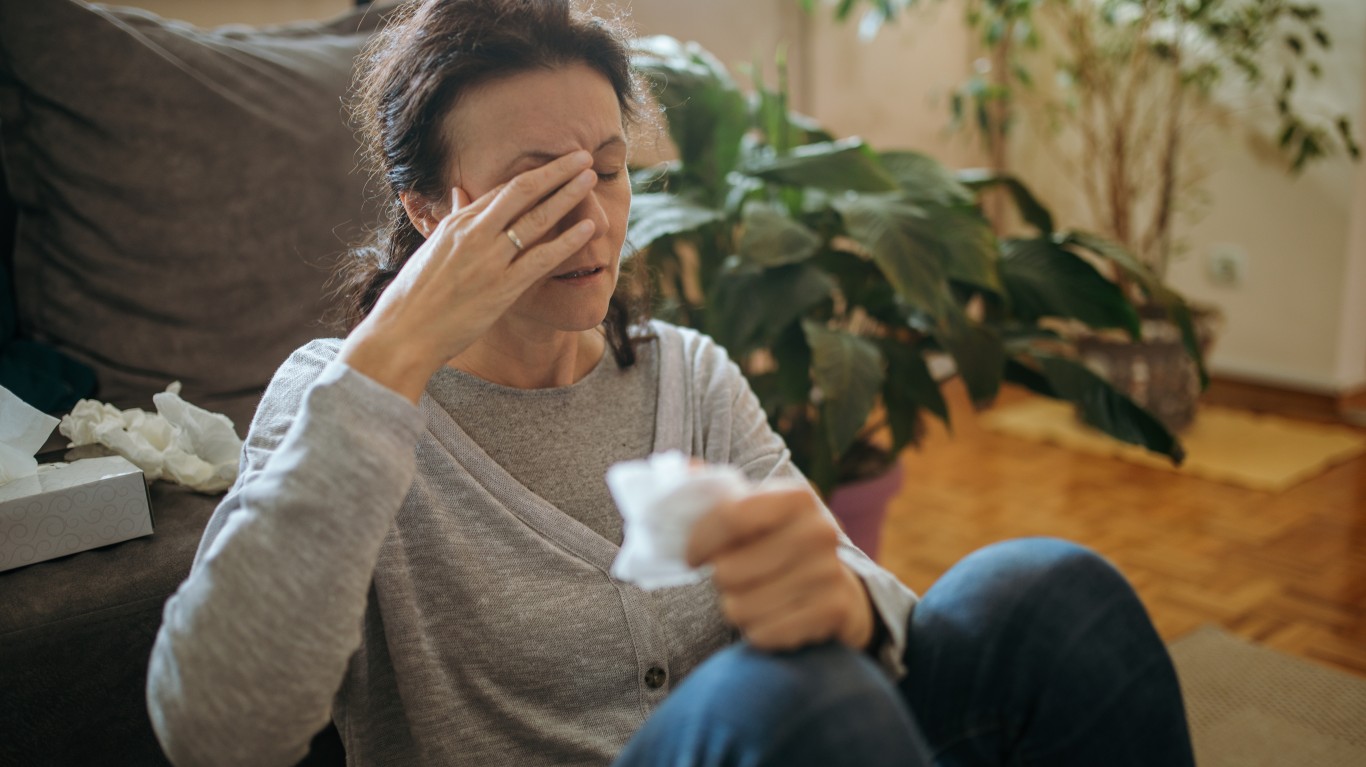
Itchy eyes
Itchy eyes are often caused by some type of allergy. An irritating substance, which can be an allergen like pollen, dust,and animal dander, causes the body to release chemicals called histamines in the tissues around the eyes. This may result in itching, redness, and swelling. Medicated eye drops are usually the go-to treatment for an eye inflammation due to an allergy, also called allergic conjunctivitis.
[in-text-ad]
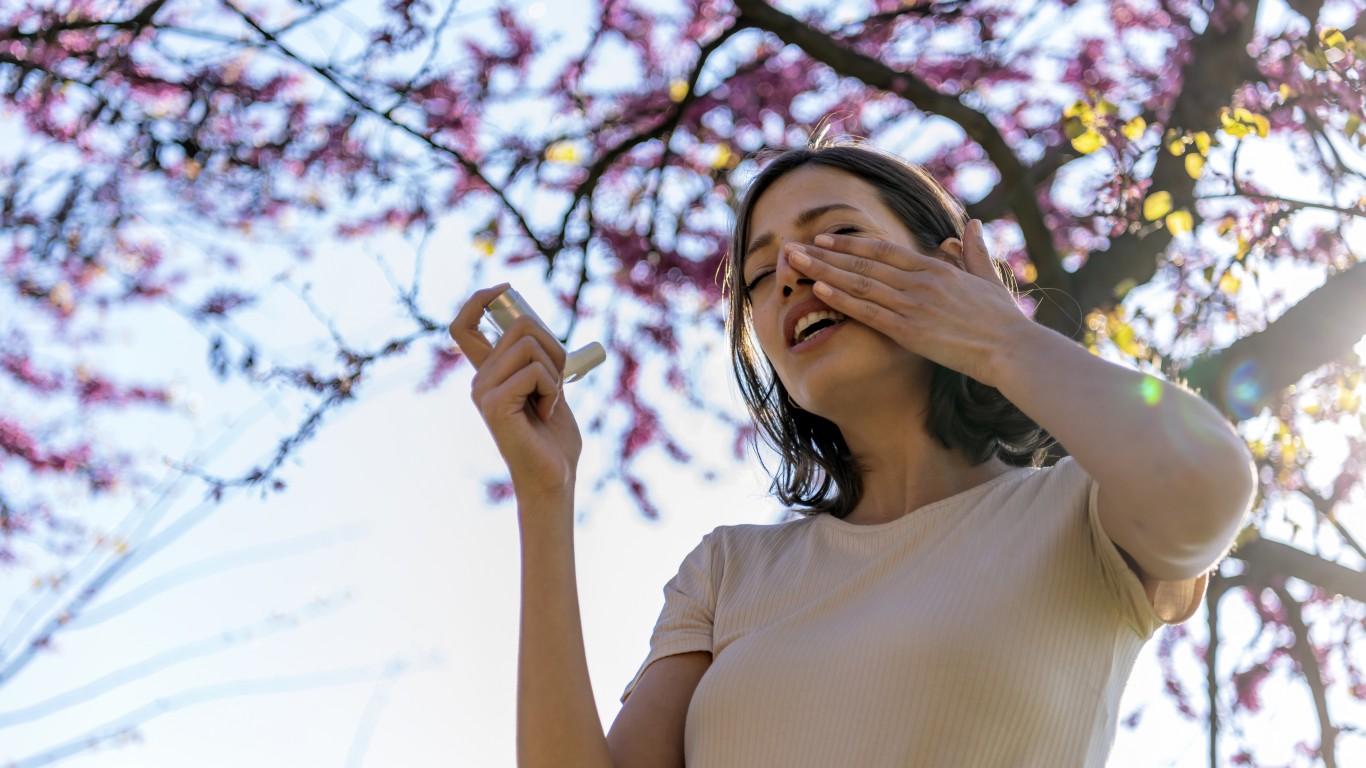
Itchy nose
The nose does a lot more than let air pass through it. It warms the air and adds moisture to it before it gets into the lungs. The nose also traps foreign tiny particles, keeping them out of the lungs. Allergies to both indoor or outdoor substances like pet dander, pollen, and even dust mites can cause an irritating inflammation in the nose that may make the nose itch.
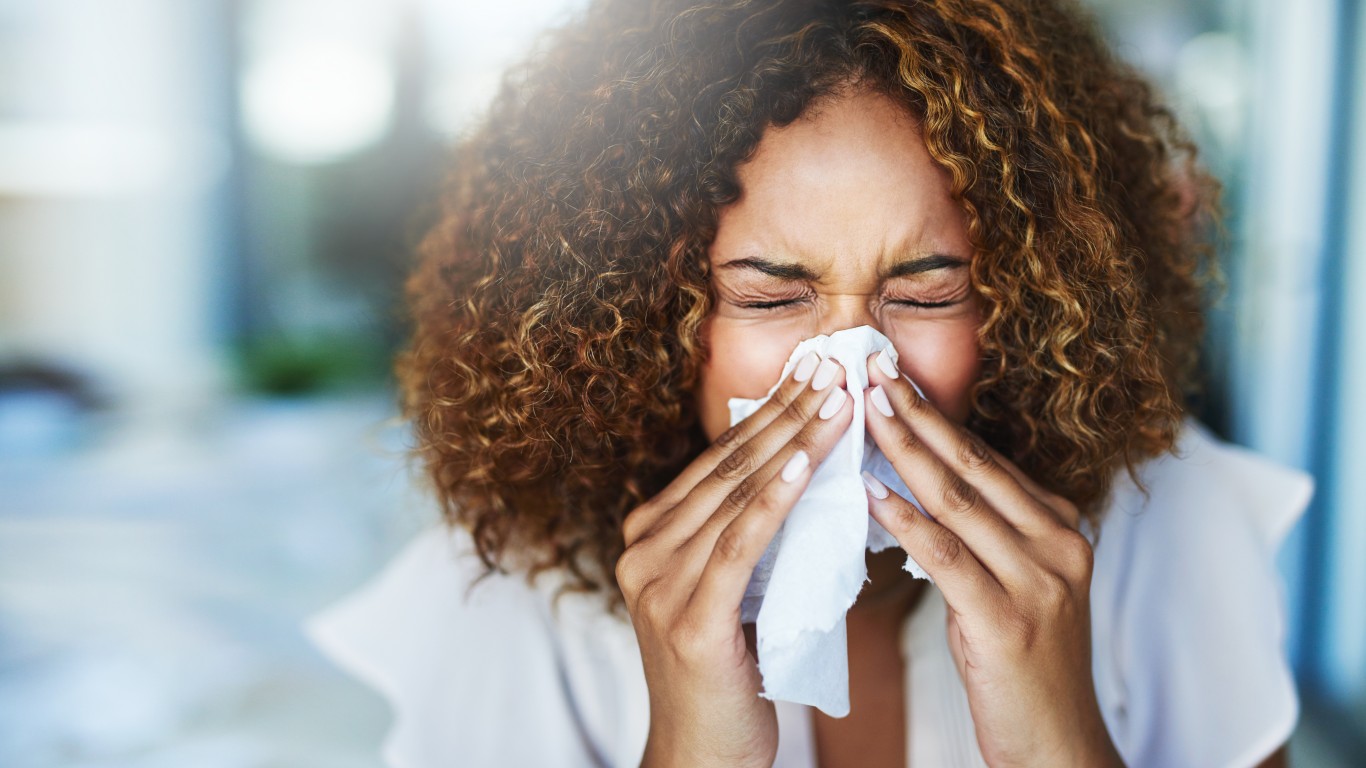
Stuffy nose
When your nose has come in contact with allergens, the body releases chemicals such as histamines and leukotrienes. Blood vessels swell, causing nasal congestion, and mucus production increases, which leads to a stuffy nose.

Scratchy throat
When the body comes in contact with allergy triggers like pollen, it releases chemicals called histamines, which may lead to congestion. Congestion may make you breathe through the mouth, which can dry out the throat. Mucus may then drip down the back of the throat. That can irritate and inflame the throat, which can make it feel sore.
[in-text-ad-2]
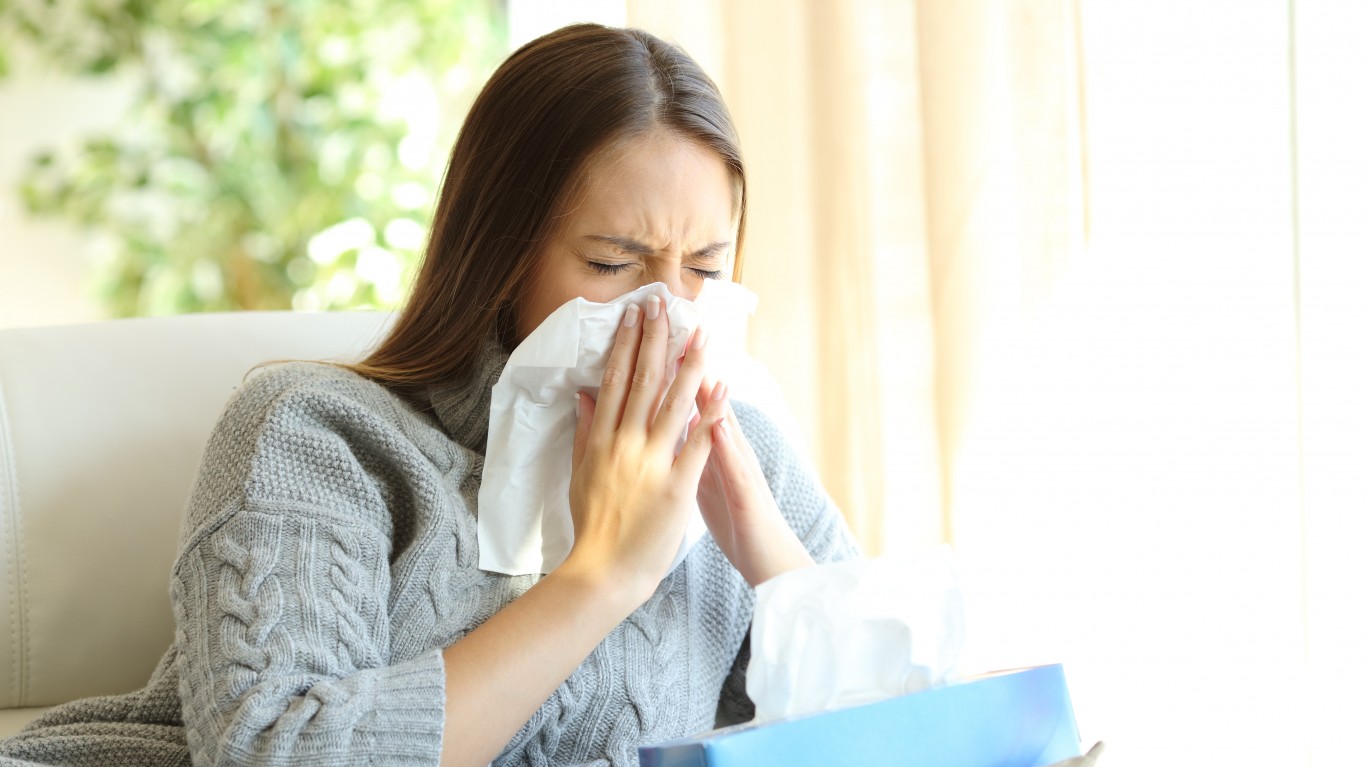
Nasal discharge
Nasal discharge is mucus flowing down the throat and out of the nose, usually as a result of allergies or having a cold. The role of mucus is to trap bacteria, germs, and allergens from making their way into the lungs. Allergens are irritants the body thinks are harmful bacteria and therefore reacts by causing a runny nose in order to flush the irritants out and prevent them from getting into the lungs.
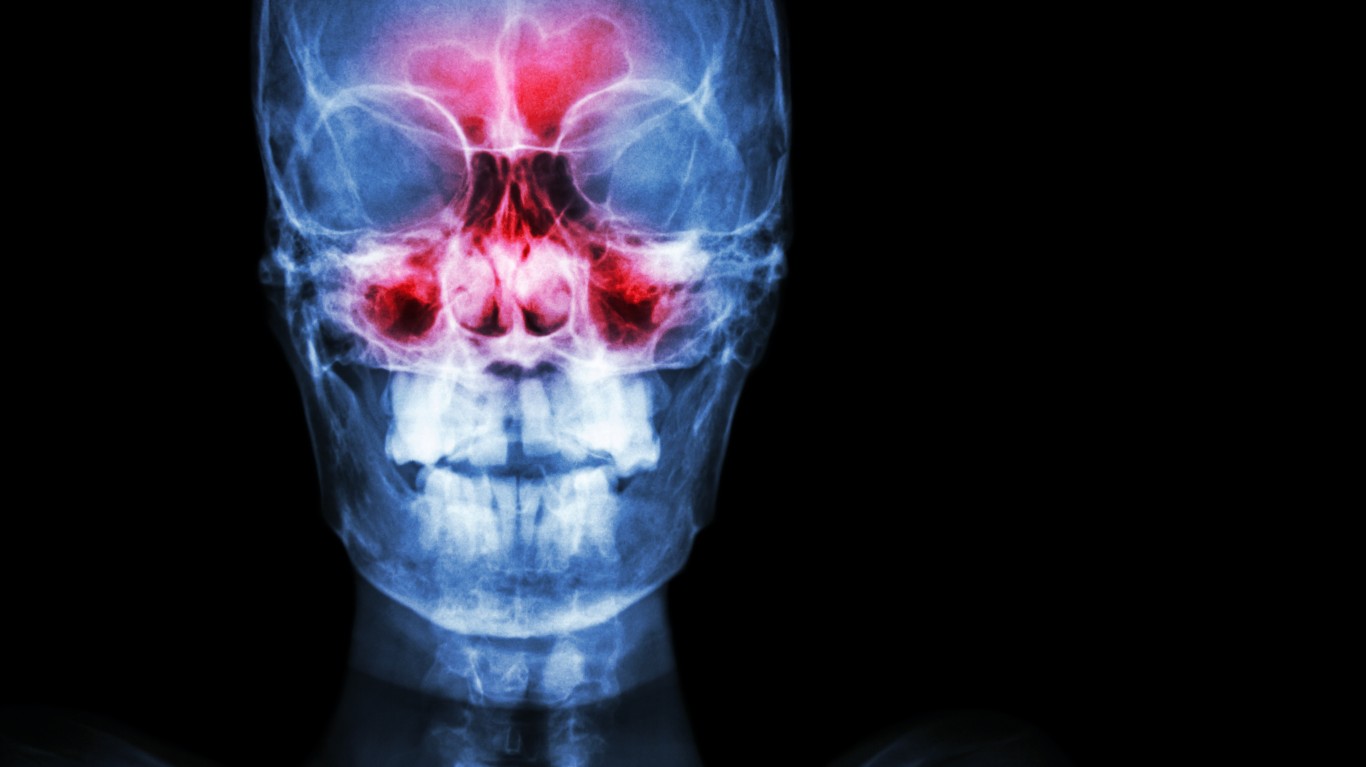
Sinus headache
Allergies sometimes cause an inflammation of the lining tissue of the sinuses. The inflammation may cause fluid secretion that can block drainage from the sinuses. That, in turn, may lead to increased pressure in the sinus cavities, leading to a headache. Affected people may also feel pressure around the eyes, cheeks, and forehead.
Sinus headaches as a result of allergies are not very common, according to the American Academy of Allergy, Asthma and Immunology. People who think they have sinus headaches often have misdiagnosed migraines.
Take Charge of Your Retirement In Just A Few Minutes (Sponsor)
Retirement planning doesn’t have to feel overwhelming. The key is finding expert guidance—and SmartAsset’s simple quiz makes it easier than ever for you to connect with a vetted financial advisor.
Here’s how it works:
- Answer a Few Simple Questions. Tell us a bit about your goals and preferences—it only takes a few minutes!
- Get Matched with Vetted Advisors Our smart tool matches you with up to three pre-screened, vetted advisors who serve your area and are held to a fiduciary standard to act in your best interests. Click here to begin
- Choose Your Fit Review their profiles, schedule an introductory call (or meet in person), and select the advisor who feel is right for you.
Why wait? Start building the retirement you’ve always dreamed of. Click here to get started today!
Thank you for reading! Have some feedback for us?
Contact the 24/7 Wall St. editorial team.
 24/7 Wall St.
24/7 Wall St.
